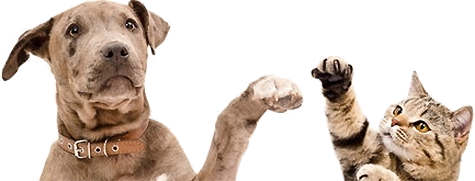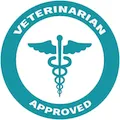
Glaucoma in dogs is an unpleasant condition that can vary in severity. That’s why it’s good to know the signs and to be aware of this condition.
Read on to learn more about glaucoma in dogs, including information on symptoms and treatment.
What is Glaucoma in Dogs?
Glaucoma is a condition characterized by increased pressure within the eye, which causes nerve damage, pain and even blindness.
Treatment is either medical (regular drops into the eye) or surgical (stents to allow drainage). Unfortunately, glaucoma can be difficult to control and sometimes result in patients going blind in the affected eye.
Forms of Glaucoma in Dogs
There are two forms of glaucoma: sudden onset and a gradual onset. As the name suggests, the sudden forms come on swiftly, and the quick swelling is very painful. The slower form is less so, with the affected eye slowly becoming visibly larger than its healthy partner. Because the eye has some time to stretch, the slower form is less painful.
Dog Breeds that are Higher Risk for Glaucoma
Certain breeds have quirks in their ocular anatomy, which means they are more at risk of developing glaucoma. These breeds include:
- Basset hound
- American and English Cocker Spaniel
- Flat-coated retriever
- Golden retriever
- Samoyed
- Shar-pei
- Welsh springer spaniel
Glaucoma in Dogs Symptoms
Pressure slowly building inside the eye causes stretching, and the globe becomes larger than the other eye.
Sometimes the eye is so swollen that the surface (cornea) develops a misty or hazy appearance, which is technically described as “corneal bluing.” This finding happens for reasons other than glaucoma but is always a sign to seek veterinary attention.
Glaucoma is painful, and individuals have their own way of showing discomfort. Some become more withdrawn and refuse to eat, while others’ tempers may become shorter. Commonly, the pet will be lethargic and not keen to exercise or go for walks. A few other signs of glaucoma in dogs include:
- Issues with vision
- Tearing up
- Redness
- Bulging eye
- Pain or discomfort

Causes of Glaucoma in Dogs
The eye is basically a globe filled with fluid. This fluid, however, is not like a bucket of water that is never changed. It is constantly drained away and replenished.
In a healthy eye, the fluid is produced and drained at the same rate, keeping everything perfectly balanced (the bucket does not overflow). In glaucoma, though, a problem develops with the drainage part of this equation, where more fluid is produced more quickly than it can leak away, causing the inner pressure to build.
If the “drainage angle” is too narrow, this restricts the flow of fluid, a bit like having a blocked storm drain in heavy rainfall. And sometimes there can be a physical blockage, such as the lens slipping out of place or the iris (the colored part of the eye) becoming so inflamed that it clogs the drainage angle.
Diagnosis of Glaucoma in Dogs
The diagnosis is made by testing the intraocular pressure (IOP).
This is done with an instrument called a tonometer, similar to the device used when you have your own eyes tested by the optometrist.
Normal IOP is between 15 and 25 mmHg. Above this, the animal is suffering from glaucoma. A specialist veterinary ophthalmologist will also look inside the eye to troubleshoot for drainage problems.
Glaucoma in Dogs Treatment
Sophisticated drugs are available to decrease the production of tear fluid or to improve drainage. Although these drugs work well up to a point, sometimes the glaucoma is so severe that surgery is the better option.
Surgery on the eye is incredibly delicate and best done by a specialist with access to magnification and fine instruments. The operation involves placing a stent (a fine tube) to give the excess intraocular fluid a way to drain.
Was YOUR Pet Food Recalled?
Check Now: Blue Buffalo • Science Diet • Purina • Wellness • 4health • Canine Carry Outs • Friskies • Taste of the Wild • See 200+ more brands…

If the dog has already lost his sight or is in permanent pain, then the kindest option may be to remove the eye and get rid of the discomfort once and for all.
This happy Dachshund lost his eye to glaucoma, but he still loves to play fetch:
How to Prevent Glaucoma in Dogs
A veterinary ophthalmologist can assess a pet’s risk of developing glaucoma. Especially if one eye has already developed it, there is evidence that treating the remaining at-risk eye may postpone glaucoma’s onset.
Frequently Asked Questions (FAQ)
What Does Glaucoma in Dogs Look Like?
What glaucoma in dogs looks like can vary. For example, the eye can be swollen, red, irritated, and it sometimes will take on a cloudy appearance.
How Common is Glaucoma in Dogs?
Glaucoma is a relatively common condition in dogs. However, certain breeds do tend to be more at risk. For example, some of these include Basset hounds, Cocker Spaniels, etc.
Is Glaucoma in Dogs Painful?
Yes, glaucoma in dogs is painful. Different dogs may cope and react to the pain in various ways.
Reference
- Small Animal Ophthalmology. Pfeiffer & Peterson-Jones. 3rd edition. Publisher: W. B. Saunders.

This pet health content was written by a veterinarian, Dr. Pippa Elliott, BVMS, MRCVS. It was last reviewed Oct. 13, 2018 and updated July 22, 2024.



